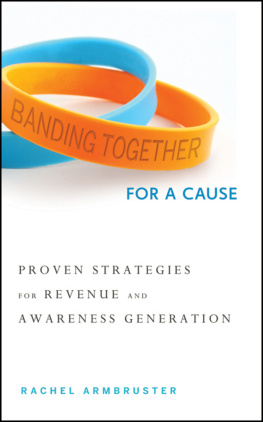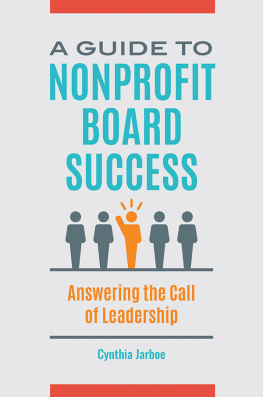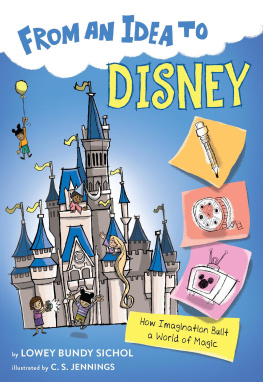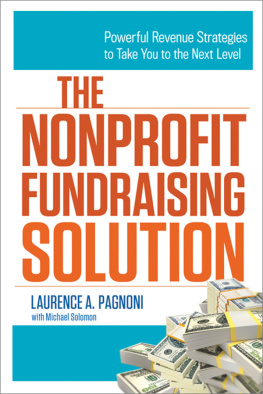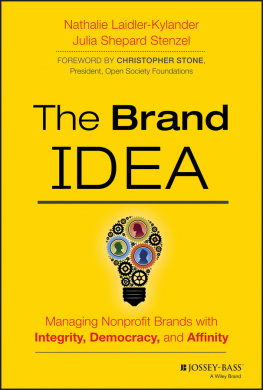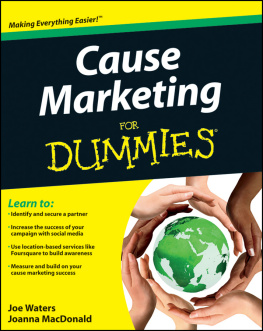Copyright 2012 by Rachel Armbruster. All rights reserved.
Published by John Wiley & Sons, Inc., Hoboken, New Jersey.
Published simultaneously in Canada.
No part of this publication may be reproduced, stored in a retrieval system, or transmitted in any form or by any means, electronic, mechanical, photocopying, recording, scanning, or otherwise, except as permitted under Section 107 or 108 of the 1976 United States Copyright Act, without either the prior written permission of the Publisher, or authorization through payment of the appropriate per-copy fee to the Copyright Clearance Center, Inc., 222 Rosewood Drive, Danvers, MA 01923, (978) 7508400, fax (978) 6468600, or on the Web at www.copyright.com. Requests to the Publisher for permission should be addressed to the Permissions Department, John Wiley & Sons, Inc., 111 River Street, Hoboken, NJ 07030, (201) 7486011, fax (201) 7486008, or online at www.wiley.com/go/permissions.
Limit of Liability/Disclaimer of Warranty: While the publisher and author have used their best efforts in preparing this book, they make no representations or warranties with respect to the accuracy or completeness of the contents of this book and specifically disclaim any implied warranties of merchantability or fitness for a particular purpose. No warranty may be created or extended by sales representatives or written sales materials. The advice and strategies contained herein may not be suitable for your situation. You should consult with a professional where appropriate. Neither the publisher nor author shall be liable for any loss of profit or any other commercial damages, including but not limited to special, incidental, consequential, or other damages.
No rights in the LIVESTRONG mark are granted and LIVESTRONG does not endorse the content. Rachel Armbruster was an employee at the Lance Armstrong Foundation from 2000 to 2006 but is not currently a LIVESTRONG employee and does not represent LIVESTRONG or its views; the opinions and recollections belong solely to Rachel Armbruster.
For general information on our other products and services or for technical support, please contact our Customer Care Department within the United States at (800) 7622974, outside the United States at (317) 5723993, or fax (317) 5724002.
Wiley also publishes its books in a variety of electronic formats. Some content that appears in print may not be available in electronic books. For more information about Wiley products, visit our web site at www.wiley.com.
Library of Congress Cataloging-in-Publication Data:
Armbruster, Rachel, 1975
Banding together for a cause : proven strategies for revenue and awareness generation / Rachel Armbruster. 1
p. cm.
Includes index.
ISBN 978-1-118-09736-6 (cloth); ISBN 978-1-118-18473-8 (ebk); ISBN 978-1-118-18475-2 (ebk); ISBN 978-1-118-18474-5 (ebk)
1. Nonprofit organizationsManagement. 2. Social responsibility of business. 3. Strategic alliances (Business) I. Title.
HD62.6.A76 2012
658.4012dc23
2011039255
This book is dedicated to my family. My husband Brandon who has always been my rock and my biggest fan. My children, Carter and Evan, who motivate me to be better every day and my parents, Jerry and Donna, without whom I would not have had the education, the spirit of giving back, or the confidence to pursue that which seemed impossible. I love you all.
Preface
Yellow wakes me up in the morning.
Yellow gets me on the bike every day.
Yellow has taught me the true meaning of sacrifice.
Yellow makes me suffer.
Yellow is the reason Im here.
Lance Armstrong
The wristband campaign was the official start of the transformation of the Lance Armstrong Foundation (Foundation). Initially, the brand LIVESTRONG really represented a new online resource center program within the Foundation. When we responded to Nikes original concept, we included the resource center in our plans to mobilize our constituents. Nike immediately recognized the power of LIVESTRONG and the band that was sold worldwide simply said LIVESTRONG.
If I hadnt personally been involved in the campaign, I almost wouldnt have believed how it came about and the magnitude of the changes that came with it for the organization, the people involved, and, most importantly, the cancer community. If you are working at a nonprofit today or for a company that is doing standard outreach and community relations, my guess is that you hear about these types of campaigns but cant really imagine how to make this happen at your own organization. It can sometimes be hard to even think about what the first step might be to go down this path.
This books goal is to provide key insights, present meaningful questions to start your thinking, and some sense of the yellow wristband journey. Hopefully, these insights and memories will offer up best practices to help take your organization to the next level. You will notice that there is a process, a focus on improvement, and a passion for relationships that drive success. There should be nothing in this book that you cannot create for your own cause.
Knowledge is Freedom: hide it, and it withers; share it, and it blooms.
P. Hill
One of the wonderful things about working in the nonprofit space is the willingness of everyone to work for the greater good. We are all trying to change the world. When one group finds a program that works, it should be leveraged by others for other worthy causes. The key is to be the organization that creates the programs that others replicate and to only implement those ideas that make sense for your organization. Be a leader in the marketplace and be selective about how you spend your resources.
The best businesses are those that have figured out how to combine profits, passion, and purpose.
Tony Hsieh
While all of our organizations represent various causes, there is one thing that we all have in common and that is a desire to help people. Programs teams are able to help people through direct services, but for people in accounting, marketing, or development, it happens in the creation of campaigns; the development of partnerships that make people think and create lasting change in the world. Sometimes it is hard to connect the dots from how data entry in the donor-operations department plays into the larger mission of an organization. The wristband campaign and the opportunity it presents to share the experience both provide a very tangible way to connect. Dont neglect those chances to give back and help people.
Its important to note, when reading this book, that talking about your failures or those experiences that did not end in millions of dollars raised is a great opportunity for learning. Success is usually preceded by failure. Be willing to share both the successes and failures with others. The failure may even have more of an impact than the successful campaign stories. That is one of the main reasons I am documenting my experience with the wristband campaign here. I am hopeful that other nonprofits and companies are able to learn from the experiences contained in these pages. I hope the lessons I am sharing can help organizations to create campaigns to benefit poverty, diabetes, education, asthma, or any number of worthy causes. Its humbling to think, then, that my legacy would be about creating a world of change instead of being linked to one amazing campaign. In turn, maybe this will help you ask yourself these questions: What is my legacy? How are others learning from my experiences? Have I made myself accessible?
Sharing should be a part of every stage of your routine and process. Imagine a non-profit partnership director training a new member of the team. Typically, the scenario includes a watch and learn comment and then the new person is left on their own to recreate that scene with other partner prospects. All the while, the new person is hoping they get the script right. What if that same partnership director prepared with the new person pre-meeting to share what they had prepared for the exchange, and then reviewed the entire exchange post-meeting. This is something development professionals apply often to major giving opportunities. When we are headed to a meeting with a potential donor, we take time to send a donor overview to our accompanying board member or executive. We talk through our recommended approach including the conversation starters, ask amounts, back-up plans, and more. Then, immediately after the meeting, we spend time talking about how the meeting went and where we were right on or how we missed the mark. When sharing your wisdom, experience, and insights, dont wait until you have checked off every box on your to do list. Sharing at every step of the campaign and partnership is valuable and can result in you achieving your goals even faster on your own.

